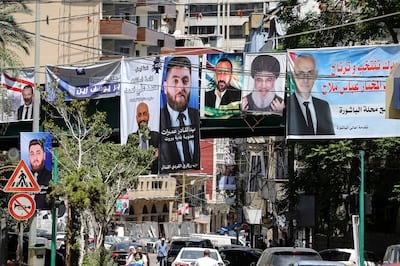The Trump administration’s approach to Lebanon remains a mystery. It’s not so much that US officials haven’t articulated the outcomes they would like to see in the country, but rather they do not seem to be doing much to achieve them. Worse, their actions are discrediting a president and government eager to collaborate with Washington.
What were the main aims of the US envoy Amos Hochstein, who came to Beirut last year to finalise a ceasefire agreement between Hezbollah and Israel? It was to implement an expanded version of UN Security Council Resolution 1701, which imposed, among other things, Hezbollah’s disarmament south of the Litani River (as well as a disarmament of all armed groups in Lebanon, in line with Resolution 1559).
Mr Hochstein strengthened the implementation mechanism of Resolution 1701 by giving Israel a side letter allowing it to target Hezbollah’s weapons even after the ceasefire was implemented if the Lebanese failed to end any violations. Politically, his aim was to subsequently sponsor talks between Lebanon and Israel on delineating their land border, resolving outstanding disagreements over border points and, therefore, removing any justification for Hezbollah to retain its weapons.

Most importantly, the ceasefire agreement introduced a mechanism to end Israel’s occupation of Lebanese territory in a period that “should not exceed 60 days”. This deadline ended in January. However, the Israelis insisted on remaining in five Lebanese hills along the border, because they did not want Hezbollah to plant its flags there and dissuade Israeli inhabitants of the north from returning to their homes.
The Trump administration went along with this, and there are no indications of when, or even if, the Israelis will fully pull their forces out of Lebanon. Since then, the Lebanese army has continued to remove arms south of the Litani, but there has been no progress on Lebanon’s demands: a full Israeli withdrawal; the return of Lebanese prisoners held by Israel; and demarcation of the Lebanon-Israel land border.
In March, there was a report that Lebanon and Israel had agreed to establish working groups to address the three outstanding issues. However, this was incorrect. The Lebanese do not want to establish working groups because it could create a semblance of normalisation with Israel they want to avoid, and Lebanon neither holds Israeli prisoners nor occupies Israeli land, making committees for these matters unnecessary.
Instead, the Lebanese prefer to operate in the framework of a military technical committee, similar to the one involved in delineating the maritime border with Israel in 2022. The position of the Trump administration in this regard appears to be unclear. While the Americans would like to see the Lebanese talk to the Israelis, on her last visit to Beirut in April the US envoy Morgan Ortagus did not raise the issue of the three committees, only negotiations in general.
According to news reports, Lebanese Prime Minister Nawaf Salam proposed that Ms Ortagus resume the shuttle diplomacy of her predecessor, Mr Hochstein. While the accounts were that she had reacted positively to the proposal, nothing since then has indicated that she intends to act on it. This makes the Lebanese feel they are in limbo.

No less disconcerting to them is that the monitoring committee established by the ceasefire agreement has done nothing to curtail repeated Israeli violations of the agreement. Indeed, the Lebanese were frustrated with the long absences of the US general heading the committee, Jasper Jeffers. When he finally arrived in Beirut in April, it was only to introduce his successor, General Michael Leeney, who, according to the US embassy in Beirut, will be “a full-time senior US military leader in Beirut”.
If this was a US concession to the Lebanese, it was hardly enough. The Israeli occupation is damaging the credibility of Lebanese President Joseph Aoun and Mr Salam, who have affirmed that Hezbollah must surrender its weapons and allow the Lebanese army to defend Lebanon’s borders. Instead, Hezbollah officials have now made discussion of the party’s arms conditional on an Israeli withdrawal.
Nor is there any indication Ms Ortagus did much to advance matters while in Beirut. The US embassy posted on social media platform X that her discussions had been “frank”, appearing to suggest that the Americans had pressed the Lebanese to accelerate Hezbollah’s disarmament. We appear to be in a stalemate where the Lebanese cannot advance on the party’s weapons until Israel pulls its forces out of the south, while the US won’t press Israel on a withdrawal until Hezbollah agrees to surrender its arms.
More absurd, the Israelis have violated the ceasefire agreement negotiated by the US thanks to the US side letter allowing them to do so. In other words, Washington has put forth two incompatible agreements. If that’s its strategy, it makes little sense.
The US aim is, allegedly, to prop up the Lebanese state as a counterweight to Hezbollah so it can negotiate a surrender of the party’s weapons. However, it is ludicrous to think this can be done by demonstrating how powerless the state is when facing Israel. Unless the Americans change direction, they will weaken the very people they seek to bolster against Hezbollah, which can only gain from this anomalous situation.




